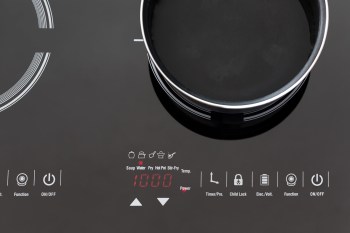Research has uncovered microplastic and nanoplastic contamination in our food from plastic food packaging.
The plastic fragments can migrate into foodstuffs from food contact articles (FCAs), posing questions about our daily exposure and the material's potential health impacts.
What's happening?
Scientists made a map based on 103 studies, analyzing data on micro- and nanoplastics. Their study, published in the npj Science of Food journal, showed these plastics were in food and food simulants when in contact with plastic FCAs.
Evidence points to micro- and nanoplastics being released from these products.
This migration isn't only happening from worn-out or damaged items. It occurs when opening a plastic bottle, cutting on a chopping board, or steeping tea in certain tea bags.
These tiny plastic pollutants have been detected in a variety of foods and beverages, including bottled water, soft drinks, take-out foods, and table salt, among others.
Save $10,000 on solar panels without even sharing your phone number Want to go solar but not sure who to trust? EnergySage has your back with free and transparent quotes from fully vetted providers that can help you save as much as $10k on installation. To get started, just answer a few questions about your home — no phone number required. Within a day or two, EnergySage will email you the best local options for your needs, and their expert advisers can help you compare quotes and pick a winner. |
Bottles (30.7% of entries) and unspecified containers (19%) were the most studied FCAs. Tea bags and single-use cups also showed significant migration.
Why is plastic packaging contamination concerning?
The presence of MNPs in our food supply leads to human exposure to these particles. While the health consequences are still being researched, initial studies suggest adverse effects.
Exposure to MNPs has been linked to oxidative stress, inflammation, and neurotoxicity. They are also said to affect the immune and reproductive systems, as well as the human gut microbiome.
Understanding the health risk of MNPs and mitigating exposure ensures a healthier community.
|
Do you think Americans use too much plastic? Click your choice to see results and speak your mind. |
This study adds to a growing body of evidence about ubiquitous plastic pollution. The fact is, plastic waste is a problem for both the environment and the human body.
What can I do to help combat microplastics and nanoplastics?
Since FCAs are commonplace, the MNPs they leach into our food require a few precautions. Reducing dependence on single-use plastics, and choosing alternatives, will reduce plastic pollution.
We can opt for reusable water bottles and food containers. We can support businesses that use plastic-free or sustainable packaging solutions. Countries are also investing in advanced recycling technologies to manage existing plastic waste.
The study's authors conclude that "further research is needed to systematically characterize MNP migration." To safeguard human health, they also suggest "regulations could mandate MNP migration testing for FCAs."
Protecting our health by testing for MNPs is the beginning. Preventing MNPs is the ultimate goal.
We have to start by using less plastic, reducing our exposure to and the number of MNPs. Taking control of our consumer habits now will create a healthier, cleaner future.
Join our free newsletter for easy tips to save more and waste less, and don't miss this cool list of easy ways to help yourself while helping the planet.














